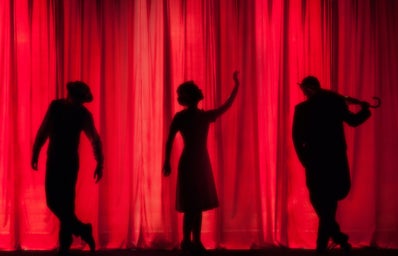Gracious, delicate, beautiful and… obsessive? Women in dance films, above all when it comes to ballet, instead of showing a strong artistic image, opened space for the glamorization of psychological and eating disorders, deadly competition between girls and hyper sexualization of their bodies.
The need to always be number one can be even mortal, the main idea on most of the features evolving dance is to put young girls against themselves to fight for their moment under the spotlight, as portrayed in “Birds of Paradise” (2021), directed by Sarah Adina Smith. The movie is about a competition from beginning to end, and the winner has the chance to dance for the most traditional Opera in Paris.
So, if the characters aren’t competing with each other, they’re competing with their own selves. The search for magnificence is so rough that their routines are shown as if their lives revolved around dance, which in that stereotype, is always true.
The obsessive artist, according to popular opinion on film networks, is already considered a genre of its own, and increasingly fan favorite. It’s impossible to forget the role of Natalie Portman in Darren Aronofsky’s “Black Swan” (2010), an Oscar-nominated performance, which portrays the life of Nina Sayers, a complex woman who puts everything on the line until she reaches extreme perfection on the “Swan Lake” dance act.
The cost of perfection
Also, this kind of movie does not try to mask eating disorders, on the contrary: image issues are the main allies of these girls in their pursuit of perfection. According to a study carried out in a classical ballet company in Paraná, through EAT (eating attitude test) and BITE (Bulimic Investigatory Test Edinburgh) tests, it was found that 75% of the 28 female dancers consulted have bulimic habits and body image distortion.
In the Spanish feature “Dancing on Glass” (2022), directed by Jota Linares, the protagonist faces image crises and makes constant measurements of her own body, all to keep herself in the ideal standard to star in a variation of one of the most acclaimed pieces of ballet, “Giselle ”.
Dancers and…witches?
There is so much mysticism around dance that stages become altars, dancers become witches and their bodies an offering. Everything focused on a single ritual: The performance that ends the plot.
In Dario Argento’s “Suspiria” (1977), its protagonist is introduced to an international company, which is later presented as a cult of women. The association with witchcraft is further explored in its 2018 remake, by Luca Guadagnino, in which the best dancer is chosen to replace the previous leader in a grotesque pact.
Therefore, even in cinema’s best attempt to approach reality, exaggerations and conspiracies still stand out. Of course, within a company, artists will always seek to deliver their best. And for sure, dance talks about sacrifices, perfectionism and hard work. However, dance is supposed to be a healthy artistic expression for everyone, and not for super thin girls with homicidal tendencies. Although much of what we see is true, it’s important not to rely on those stereotypes around women in the industry and recognize that there are other faces to the dance world.
———————————
The article above was written by Yasmin Junqueira and edited by Amanda Moraes.
Liked this type of content? Check out Her Campus Cásper Líbero home page for more!


